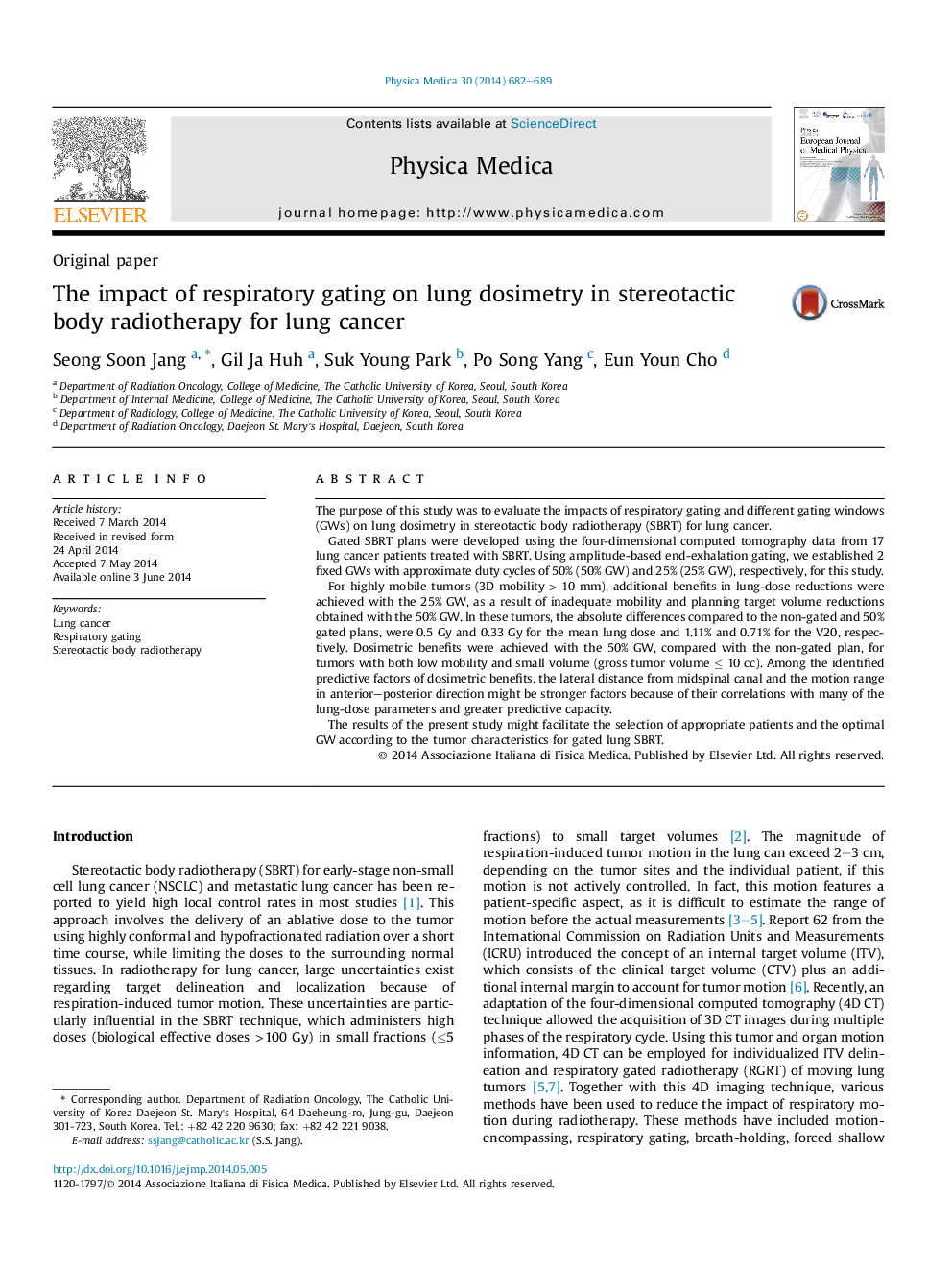| Article ID | Journal | Published Year | Pages | File Type |
|---|---|---|---|---|
| 1883081 | Physica Medica | 2014 | 8 Pages |
The purpose of this study was to evaluate the impacts of respiratory gating and different gating windows (GWs) on lung dosimetry in stereotactic body radiotherapy (SBRT) for lung cancer.Gated SBRT plans were developed using the four-dimensional computed tomography data from 17 lung cancer patients treated with SBRT. Using amplitude-based end-exhalation gating, we established 2 fixed GWs with approximate duty cycles of 50% (50% GW) and 25% (25% GW), respectively, for this study.For highly mobile tumors (3D mobility > 10 mm), additional benefits in lung-dose reductions were achieved with the 25% GW, as a result of inadequate mobility and planning target volume reductions obtained with the 50% GW. In these tumors, the absolute differences compared to the non-gated and 50% gated plans, were 0.5 Gy and 0.33 Gy for the mean lung dose and 1.11% and 0.71% for the V20, respectively. Dosimetric benefits were achieved with the 50% GW, compared with the non-gated plan, for tumors with both low mobility and small volume (gross tumor volume ≤ 10 cc). Among the identified predictive factors of dosimetric benefits, the lateral distance from midspinal canal and the motion range in anterior–posterior direction might be stronger factors because of their correlations with many of the lung-dose parameters and greater predictive capacity.The results of the present study might facilitate the selection of appropriate patients and the optimal GW according to the tumor characteristics for gated lung SBRT.
